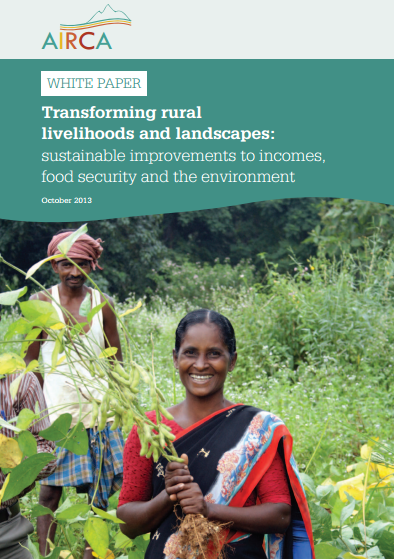 |
World Vegetable Center (Shanhua, Taiwan)Healthier lives and more resilient livelihoods through greater diversity in what we grow and eat. |
 |
CABI - CAB International (Wallingford, England, United Kingdom)Improves people's lives by providing information and applying scientific expertise to solve problems in agriculture and the environment. |
 |
CFF - Crops For the Future (Kuala Lumpur, Malaysia)Enables the wider use of underutilised crops to diversify agricultural systems, improve well-being and manage natural resources.
|
 |
ICBA - International Center for Biosaline Agriculture (Dubai, United Arab Emirates)Working in partnership to deliver agricultural and water scarcity solutions in marginal environments. |
 |
ICIMOD - International Centre for Integrated Mountain Development (Kathmandu, Nepal)Enables sustainable and resilient mountain development for improved and equitable livelihoods through knowledge and regional cooperation, for improved well-being of men, women, and children of the greater Himalayas in a healthy mountain environment. |
 |
icipe - African Insect Science for Food and Health (Nairobi, Kenya)Helps alleviate poverty, ensure food security and improve the overall health status of people in the tropics by developing and extending management tools and strategies for harmful and useful arthropods, while preserving the natural resource base through research and capacity building. |
 |
IFDC - International Fertilizer Development Center (Muscle Shoals, Alabama, USA)Enables smallholder farmers in developing countries to increase agricultural productivity, generate economic growth and practice environmental stewardship by enhancing their ability to manage mineral and organic fertilizers responsibly and participate profitably in input and output markets. |
Library / Publications
- World Vegetable Center documents
- CABI publishing products
- CABI Issuu gallery
- CFF publications
- CFF Google Books gallery
- ICBA publications
- ICIMOD publications
- ICIPE publications
- IFDC publications
- INBAR publications
Databases
- CFF: Funds and Donors Database
- ICIMOD - ArcGIS Online: a collaborative effort between ESRI and ICIMOD to build, share and distribute geographic information resources.
- ICIMOD - GeoPortal: a regional gateway for geo-information and earth observation resources.
- INBAR: Bamboo and rattan trade database
Blogs
Other useful resources
- World Vegetagle Center recipes
- CABI Plantwise - an initiative to improve food security and the lives of the rural poor by reducing crop losses.
- Plant clinics - a community based plant clinics to deliver free plant health advice to farmers.
- Knowledge bank - to store validated pest and disease
- CABI Biofuels information exchange
- CFF Crop of the Week - a column that features neglected and underutilised crops around the world.
- IFDC's projects photostream in Flickr

Transforming rural livelihoods and landscapes:
sustainable improvements to incomes, food security and the environment
INTRODUCTION
There are powerful forces driving change in agricultural systems around the world. The demand for food is rapidly increasing, and meeting it requires more efficient and environmentally friendly food production. Central to this expanding demand is a population predicted to grow from seven billion to more than nine billion by 2050. Concurrent economic and social development will trigger disproportionate pressure on the agricultural sector to produce not only greater quantities of basic foodstuffs, but also more protein, animal feed, biofuels and fibres. Growth in population and in the incomes of a large portion of the expanding population will cause demand for agricultural production to increase at an even higher velocity than the rate of population growth.
Simply increasing the amount of land dedicated to agricultural production is not easily accomplished, nor often advisable. In some parts of the world, land is scarce and under intense pressure as the expanding human population leads to the conversion of agricultural land to housing and commercial uses. In other areas, land is abundant, but is often environmentally fragile or poorly suited to agriculture. Furthermore, agriculture is a ‘thirsty’ industry, and securing adequate water for irrigation is becoming progressively more difficult in the context of competing demands on water supplies. Clearing land to expand agricultural production contributes to greenhouse gas emissions, exacerbating climate change and resulting in more erratic weather patterns (Foley et al., 2005), which make it difficult for farmers to manage their operations according to traditional practices and timelines.
How the world responds to the growing demand for food has wide-ranging implications. Agriculture is of pivotal importance, not only providing food and income for the rural poor, but also meeting the food needs of growing urban populations. Higher outputs must be accomplished by increasing the productivity of the agricultural sector, especially for smallholders in developing countries. But it must also be achieved sustainably in the context of the environment within which smallholders operate, by minimizing negative impacts on air, water, soils, biodiversity and other ecosystem services.


